We often think of “cost” as something our customers and prospects are evaluating with us. But, our sales have a cost too. And knowing what they are can make a huge difference.
The cost of sales is an extremely important metric. Unfortunately, it’s not one I see on sales leader’s dashboards too often.
Do you know what your least expensive sale is? Is it the channel, the farmers, inside sales, the hunters, who? What’s your most expensive sale? Calculation of Cost of Sales: CoS = TR/TE (Cost of sales = total revenue generated/total sales expense)
Understanding the cost of sales is critical in any sales organizations strategy. Clear visibility into how much it costs to make a sale positions you well to allocate the right resources to the right strategies and maximize return.
Imagine having a hunting team of 10 sales people that brings in 100,000 dollars month. Also imagine having an inside sales team 0f 25 that brings in 250,00 a month. On the surface, it seems to be a good deal. Individuals on both teams are bringing $10,000 a month. What happens however, is when you add in the total target compensation of the hunters vs. the inside sales team things begin to get a little ugly. The hunters make $6,500 a month, while the insides sales reps only make $3,500 a month. When you peel back the layers a bit, you can quickly see the hunting team is a very expensive revenue generating team.
Knowing the hunting team is expensive isn’t enough. The key is to dig even deeper. Imagine adding the average price per deal to the equation. What would you do if you were to learn the average price per deal for hunters was 1,500 and the average price for the inside sales team was $1,500? You have two teams, basically selling the same thing, most likely to the same people, yet one costs you considerably more.
The solution to this problem is to draw a line, not letting hunters sell a deal below $4,000 and raise their quota to $20,000 a month instead of $10,000. Now your average deal size for hunters is NO LESS than $4,000 a month. By doing this not only are you increasing your average deal size, but you also force hunters to hunt in a different forest. You no longer have expensive, outside sales reps, selling your low end products and services your inside sales team can be selling. You’ve created separation.
Look to create separation among your different go to market strategies. It makes no sense to have your inside sales reps and hunters selling the same thing. Each go-to-market approach, from hunting and farming to channel and inside sales has it’s on own unique approach to selling. Therefore, they have to be managed and structured in a way that allows you to get the most out of each group.
Don’t cookie cut things, you’ll pay in the end.
